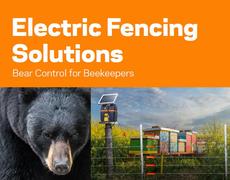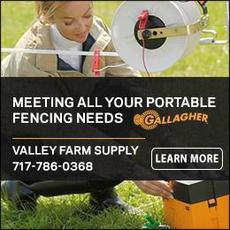Modern Electricity
The majority of people don’t know much about EMF, much less pay attention to it. Constantly attached to our phones and computers, we’re living in a wireless world where we forget that we’re draining electrical energy 24/7. New technology brings about obvious advantages both at home and in the workplace, but what many don’t know is that they can be dangerous. This is where low-EMF electrical supplies come in.

High EMF, High Drawbacks
The biggest benefit of cutting down our usage and using low-EMF supplies is the benefit it provides to our health and overall well-being, providing a greatly reduced risk to a wide array of dangerous and often deadly diseases and health issues. Exposure to high EMFs has been linked to a wide range of health problems. This list alone might make you think twice:
- Alzheimer’s disease
- Brain tumor
- Cancer
- Cardiovascular disease
- Depression
- Diabetes
- Parkinson’s disease
Now, using low-EMF supplies doesn’t mean that you have zero chance of getting any of these diseases, but your risk is reduced substantially. Simply cutting down a few hours a week provides unmatched benefits to your overall well-being, and when it comes to your health, risking it is a chance that you don’t want to take.

Low EMF, Big Benefits
Believe it or not, there are more benefits to a low-EMF lifestyle than substantially reducing your electric bill and health risks. Using low-EMF electrical supplies gives you the chance to unplug and enjoy life the way nature intended. This doesn’t mean you can’t still text your friends, but what about spending time with them in person? Instead of staying glued to your phone or computer, using these devices less often gives you the chance to interact fully, experiencing nonverbal signals you’d otherwise never have the chance to experience. It really is a whole new world.
Other Benefits
More “Me” time: Reducing your time spent glued to a computer or TV screen gives you more time to not only spend with your loved ones, but yourself as well. Unplugging gives you the chance to relax, go for a walk, and maybe catch up on some procrastination you left behind while stuck in that must-watch series.
Okay, the Money’s a Big One: Imagine if you not only unplugged your household devices when you weren’t using them, but had only the minimal cell phone plan, no Netflix, no Amazon Prime, no gaming system/subscription, no Wi-Fi, maybe only basic cable? Being surrounded by Wi-Fi everywhere is a high source of EMF and the associated health risks, so getting out in nature and away from internet cafes in general is a good thing. Aside from that, however, you can save on not only your electric bill, but your cell phone bill, internet, and cable—services many people realize they didn’t need in the first place once they reduce them. Try it; you won’t realize what you’ve been missing.

How Can We Reap the Benefits?
Believe it or not, you don’t have to disconnect all technology and live in a cave to reap the benefits of a low-EMF lifestyle. Simply cutting back, however, isn’t that hard to do in the big scheme of things, and the benefits outweigh the drawbacks by a landslide. Try a cheaper cell phone plan, cut out Netflix, sit farther away from the TV, or try watching an hour less a week-it’s that simple. You don’t know your exact level of EMF exposure, but the truth is that you’re putting your health and safety at risk. Using low-EMF electrical supplies is one of the most powerful (no pun intended) things you can do for yourself, your family, and your friends. The simple list below shows a few low-EMF choices you can make today. How many can you check off?
Things to Cut Down On:
-
Cell Phone Bill: Try a more basic plan; is unlimited data really necessary? Do you need to check your email 24/7, or can you unplug a little bit? Doing so here and there makes a huge difference.
-
Cable Bill: Do you really need all of those channels? How many do you actually watch? Do you watch cable at all, or is there just one show you love? Many people use cable for just a small number of channels or a few choice shows. There’s a good chance you could reduce to a more basic package and save big bucks, while also reducing EMF exposure.
-
TV, Gaming System, and Computer Services: Do you really need Netflix or a monthly gaming subscription? Again, cutting down reduces excess costs and protects your health by greatly reducing EMF exposure. The less time spent on any of these, the better. And it’s money saved, too!
-
Time Spent on Technology: Just cutting down an hour a day on your phone or in front of the TV makes a big difference healthwise, reducing your exposure to EMFs.
-
Time Spent in Wi-Fi Hot Zones: Wi-Fi is a huge source of EMF exposure. If you need it, you can always turn it off when you’re not using it to reduce your risk, and spend less time in hotels with Wi-Fi-enabled rooms, Wi-Fi-enabled restaurants, etc. You’re usually not using that service there, but you’re still soaking up the dangerous EMF exposure. The more time spent away from these spots, the better.
While these might seem like big steps now, they’re actually little ones that end up with a huge payoff. Your health will thank you.

Well Worth It
While EMF exposure itself is unavoidable, we can also greatly reduce our exposure by embracing low-EMF electrical supplies. Embracing a low-EMF lifestyle, using low-EMF supplies, and cutting down on some high-EMF ones around the home or office greatly reduces our exposure, shielding us from high EMFs and offering all of the protections above. As we can see, some might not realize the dangers that EMFs can really bring, but they’re not good. The benefits of low-EMF supplies can help us live longer, healthier, and happier lives all around. Try it. Embrace it. Reap the never ending benefits of better well-being with a low-EMF lifestyle. You’ll thank me later.



















